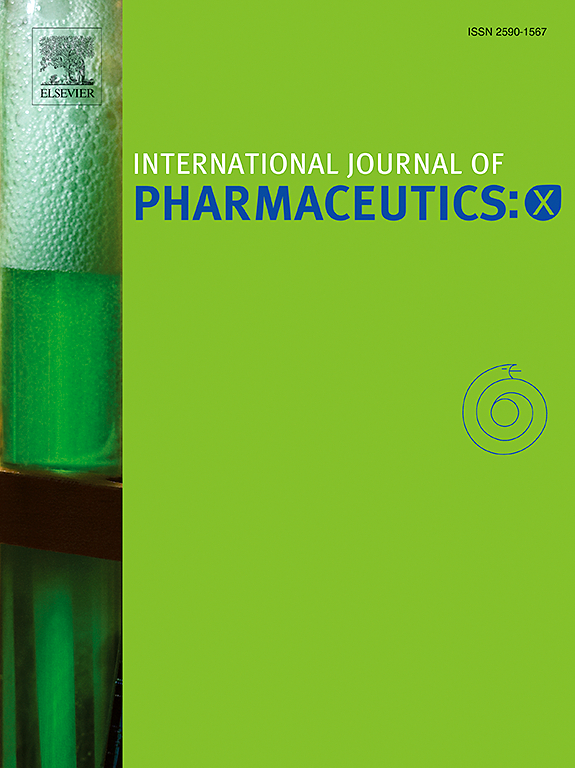RGD peptide-functionalized micelles loaded with crocetin ameliorate doxorubicin-induced cardiotoxicity
IF 6.4
2区 医学
Q1 PHARMACOLOGY & PHARMACY
引用次数: 0
Abstract
Doxorubicin (Dox)-induced cardiotoxicity presents a significant challenge to fully harnessing its chemotherapeutic potential. Crocetin (Cro), a dicarboxylic acid found in the crocus flower and gardenia fruit, has shown remarkable antioxidant and anti-inflammatory activities. However, its poor aqueous solubility and limited cellular uptake severely constrain its further application in treating diseases. In this study, we developed Arg-Gly-Asp (RGD) peptide-decorated nanomicelles delivering Cro to alleviate Dox-induced cardiac injury. The RGD@M(Cro) nanomicelles exhibited excellent aqueous solubility and a drug-loading efficiency of 93.3 %. RGD-decorated micelles could enhance the cellular uptake of Cro in cardiomyocytes and inhibit approximately 60 % of HL-1 cell apoptosis through efficient reactive oxygen species (ROS) scavenging. In a cardiomyopathy mouse model, RGD@M(Cro) substantially reduced cardiac damage and improved cardiac indicators. This study highlights the great potential of RGD-decorated micelles in treating cardiac injury and other diseases.

RGD肽功能化胶束负载克罗辛改善阿霉素诱导的心脏毒性
阿霉素(Dox)诱导的心脏毒性对充分利用其化疗潜力提出了重大挑战。Crocetin (Cro)是一种存在于藏红花和栀子中的二羧酸,具有显著的抗氧化和抗炎活性。然而,其水溶性差和细胞摄取有限严重限制了其在治疗疾病方面的进一步应用。在这项研究中,我们开发了Arg-Gly-Asp (RGD)肽修饰的纳米胶束,以传递Cro来减轻dox诱导的心脏损伤。RGD@M(Cro)纳米胶束具有良好的水溶性和93.3%的载药效率。rgd修饰的胶束可以增强心肌细胞对Cro的细胞摄取,并通过有效的活性氧(ROS)清除抑制约60%的HL-1细胞凋亡。在心肌病小鼠模型中,RGD@M(Cro)可显著减少心脏损伤并改善心脏指标。这项研究强调了rgd修饰胶束在治疗心脏损伤和其他疾病方面的巨大潜力。
本文章由计算机程序翻译,如有差异,请以英文原文为准。
求助全文
约1分钟内获得全文
求助全文
来源期刊

International Journal of Pharmaceutics: X
Pharmacology, Toxicology and Pharmaceutics-Pharmaceutical Science
CiteScore
6.60
自引率
0.00%
发文量
32
审稿时长
24 days
期刊介绍:
International Journal of Pharmaceutics: X offers authors with high-quality research who want to publish in a gold open access journal the opportunity to make their work immediately, permanently, and freely accessible.
International Journal of Pharmaceutics: X authors will pay an article publishing charge (APC), have a choice of license options, and retain copyright. Please check the APC here. The journal is indexed in SCOPUS, PUBMED, PMC and DOAJ.
The International Journal of Pharmaceutics is the second most cited journal in the "Pharmacy & Pharmacology" category out of 358 journals, being the true home for pharmaceutical scientists concerned with the physical, chemical and biological properties of devices and delivery systems for drugs, vaccines and biologicals, including their design, manufacture and evaluation. This includes evaluation of the properties of drugs, excipients such as surfactants and polymers and novel materials. The journal has special sections on pharmaceutical nanotechnology and personalized medicines, and publishes research papers, reviews, commentaries and letters to the editor as well as special issues.
 求助内容:
求助内容: 应助结果提醒方式:
应助结果提醒方式:


